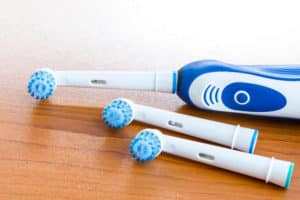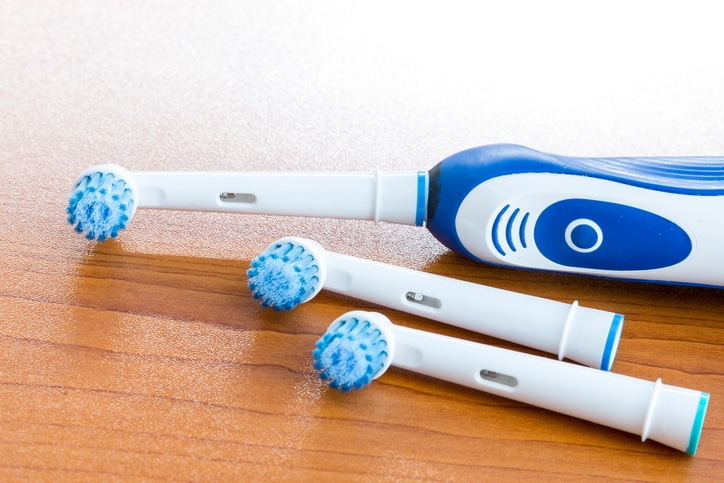
Maybe we’d be better off simply telling our valued patients to go out and buy an electric toothbrush.
What? Electric toothbrush. Those are toys with Mickey Mouse handles and all, right? Wrong. Today’s electric toothbrushes are backed by research and they do an awesome job cleaning your teeth.
Don’t believe it? Ask the American Dental Association (you know, the ADA you see on the back of toothpaste tubes and the like). The ADA recently gave their Seal of Approval to a variety of Oral-B Electric Toothbrushes. These are the first electric toothbrushes to merit that recommendation.
And at Prosthodontics of New York, we agree.
Why is an electric toothbrush better?
Electric toothbrushes, by their very nature, do the work for you. You place the brush head on your teeth and gums and let it get to work. Most electric toothbrushes have a built-in timer that tells you when you’ve been brushing for two minutes, the length of time recommended by the ADA. Basically, all you need do is move the head from tooth to tooth and it will remove the plaque from your teeth.
The goal is to be a thorough brusher, and many people are anything but that. Because the heads rotate or otherwise move, the odds of doing a better job than your hand and arm are heavily weighted in favor of electric toothbrushes. If you’re a very diligent brusher, you may get every tooth brushed and hit your gums. But not many people ever brush for the full two minutes recommended. The problem with some even good manual brushers is they can be too aggressive. This can lead to gum recession.
Here are some specific cases where electric toothbrushes are a no-brainer.
- If you’re a haphazard, cursory brusher — You know who you are. You brush your teeth but are lackadaisical about it. You could easily leave a tooth here or there with plaque on it.
- If you’re a kid — Little kids love electric toothbrushes because they’re fun gadgets. Some think they tickle their teeth. Once you explain to place the brush head on each tooth, they’ll do a good job brushing. Also, kids with traditional braces benefit mightily from electric brushes because of their thoroughness.
- If you’re elderly — As we age, many of us have some dexterity issues with our hands and fingers. Electric brushes don’t require any hand or finger dexterity.
Statistics?
Your hand and arm can produce around 200 strokes per minute with your manual toothbrush. An electric toothbrush generates from 10,000 to 30,000 strokes per minute. That’s quite a difference. Which do you think will clean better?
Want research proof? Braun Oral-B, the maker of those electric toothbrushes recently endorsed by the ADA (and a maker of both manual and electric toothbrushes, by the way), ran a casual study a couple years ago. They gave dentists and hygienists 16,000 Oral-B electric toothbrushes to give to their patients, instructing them to use them over the next six months before their regular cleaning and exam. When asked to monitor how their patients’ teeth looked when they came in for that next appointment six months later, the dental professionals said the electric toothbrush had a positive effect on the oral health of over 80 percent of the patients.
Maybe it’s time for you to go electric. If you have questions about which toothbrushes are ADA approved, simply contact us at Prosthodontics of New York and ask, (212) 758-9690.

